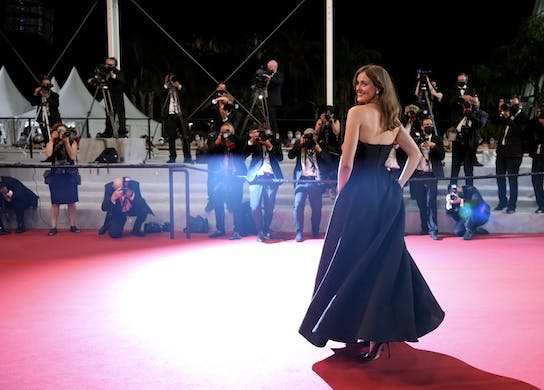Don’t Judge This Film by Its Cover
The problem with “The Worst Person in the World” is that disaffection doesn’t make for the most compelling of character traits.

“The Worst Person in the World” may come out of gray Norway but at times it feels very Hollywood, with its attractive young cast members going to parties, doing recreational drugs, and working studio-adjacent jobs like creating comic books and taking photographs.
Maybe that’s why the film has been sun-kissed with two Academy Award nominations, for Best International Feature Film and Best Original Screenplay. Academy voters might see themselves (or their younger selves) in its striving types, especially the main character, Julie.
What exactly Julie is striving for, though, is the crux of the movie’s moral and, much like Hollywood, the message is muddled.
We first see Julie in profile as she’s smoking on a veranda in a sleek black dress, the city of Oslo providing a placid background to a restless figure. Then the viewer is told via text that the film will consist of 12 chapters, along with a prologue and an epilogue.
This novelistic touch and the occasional voiceover narration adds a bit of context but the acting and visuals, conveying much the same detail, render these devices redundant. Some narration is even repeated in dialogue. Perhaps a texture of irony is the intent behind these stylistic choices but it’s neither convincing nor consistent.
The more obvious explanation is that the filmmakers wanted, in their bid for a culturally significant story, to align with Class A literature, like the play “Who’s Afraid of Virginia Woolf,” a poster for which is seen prominently in several scenes. If so, it’s another miss.
The problem with “The Worst Person in the World” is that disaffection doesn’t make for the most compelling of character traits, especially without the interiority of a novel, and indecision cannot propel a plot. In such movies as Michelangelo Antonioni’s “Red Desert” and “La Notte,” the director and actresses Monica Vitti and Jeanne Moreau were able to make lovelorn indecisiveness riveting and ennui mysterious, but it was the camera that really told the story, as it were, by foregrounding post-war isolation and industrial dehumanization.
The cinematography of “Worst Person,” on the other hand, could be called bland at best, uninformative and imitative at worst. One scene has Julie running through city streets while everyone else is frozen in mid-motion — a TikTok trend as character development.
With an episodic structure, a flighty lead character, and uninteresting visuals, what’s left? Not much beyond the sporadic reference to the #MeToo movement and ideas of pending ecological disaster.
A few times, the central love story between Julie and Askel, her somewhat older boyfriend with whom she breaks up, does set off dramatic and thematic sparks. But in many ways it feels like the filmmakers take the easy route, resorting to the age-old shortcut of illness to hasten maturity.
By the time the portentously titled final chapter arrives, I had long since given up on whether Julie would ever find some purpose or path for her life. Yet I never imagined the movie would end as pointlessly as it does. It’s not “The Worst Movie in the World,” but it left me longing for some real drama.

